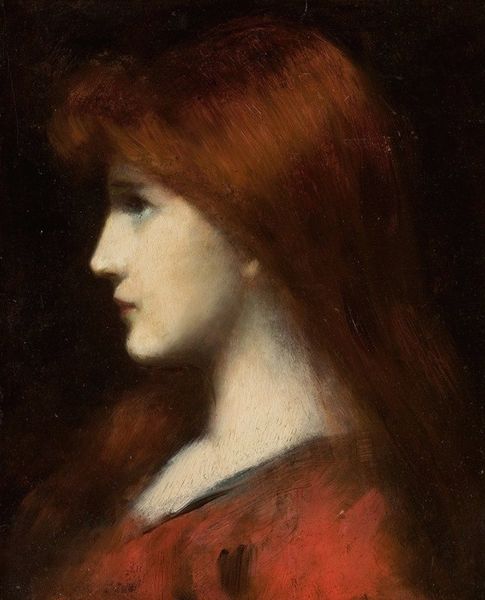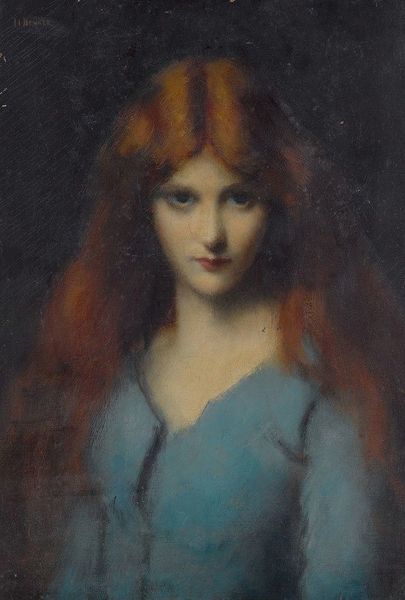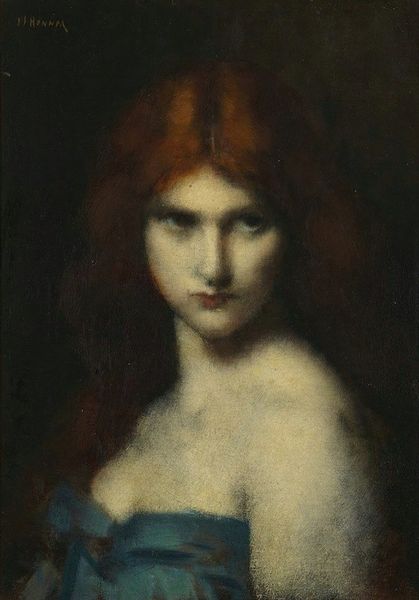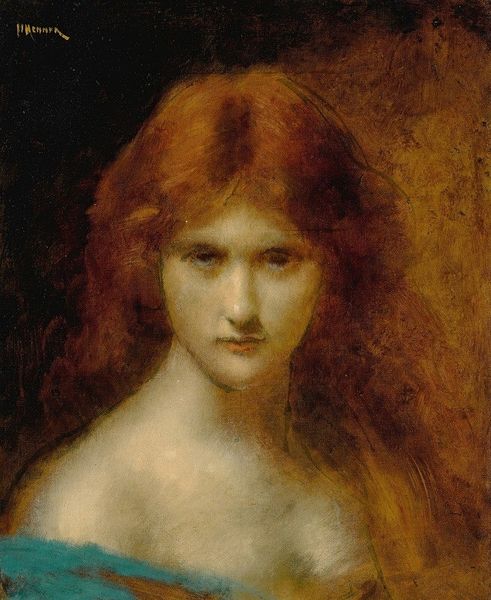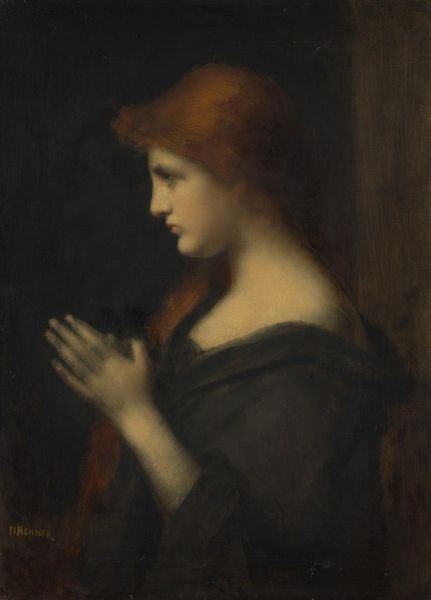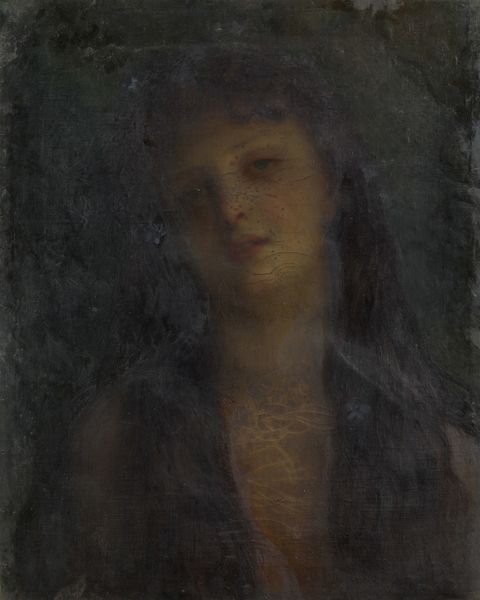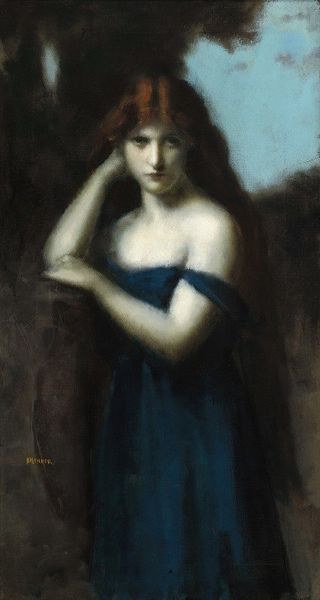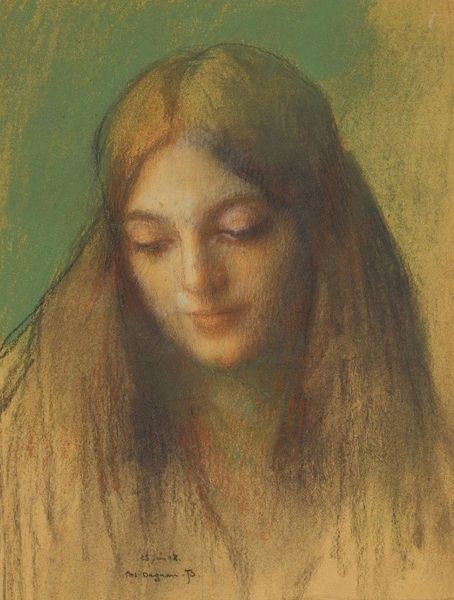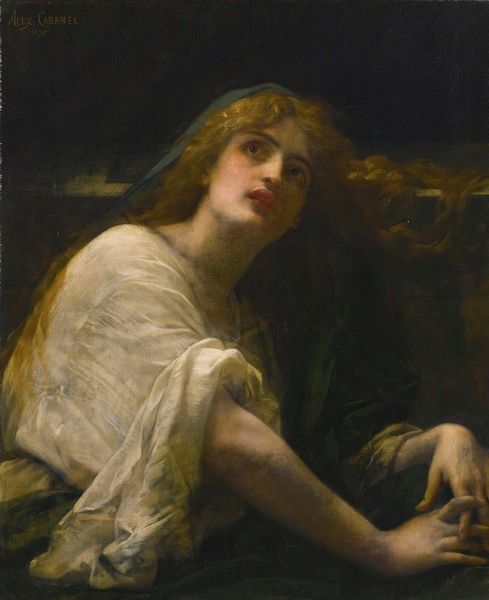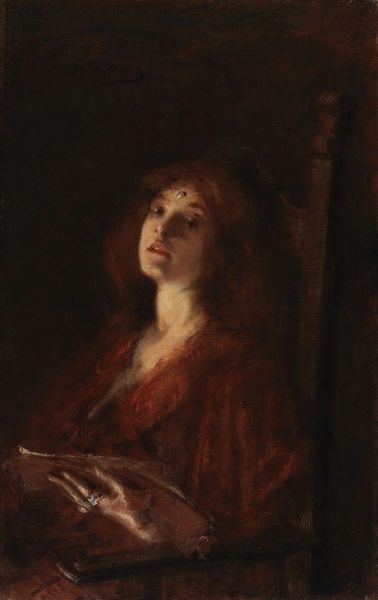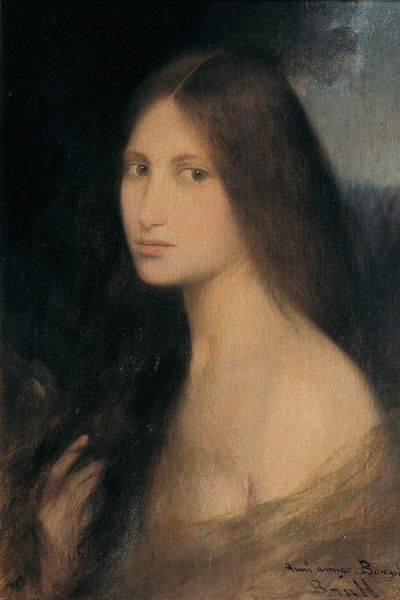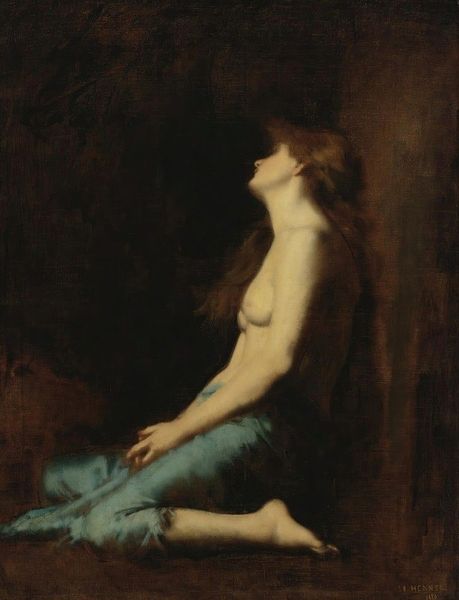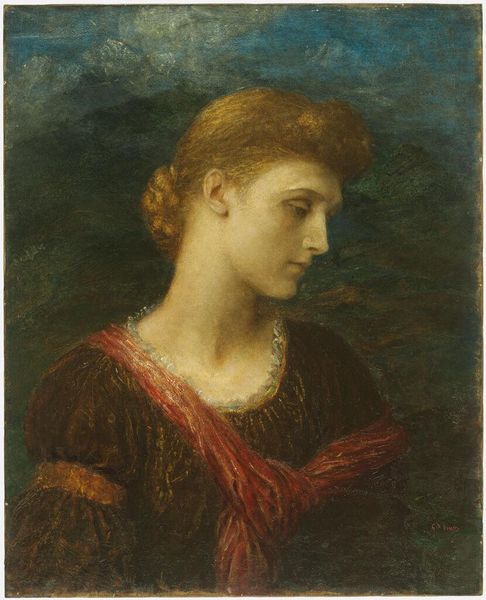
Copyright: Public Domain: Artvee
Editor: This is Jean-Jacques Henner’s “Fabiola,” painted after 1854. It's an oil painting, and there’s such a stillness and mystery about it. What do you see in this piece? Curator: The figure emerges from darkness, a visual representation of memory itself. Red hair cascades down, almost like a veil – a recurring motif for Henner. What do you think red might signify here, beyond just a physical attribute? Editor: Passion? Perhaps suffering, given her downward gaze? Curator: Perhaps. Red is visceral; it evokes blood, yes, but also vitality, life force. Henner repeated this subject, producing numerous versions. Think of the repetition as a kind of incantation, each painting a touchstone to the original saint's story, or perhaps something deeply personal to Henner himself. The face seems generic but also unique – do you find yourself searching her features for meaning? Editor: I do, actually. It’s like I’m trying to decode something in her expression, a hidden narrative. The dark background contributes to that feeling. Curator: Exactly! Henner plays with light and shadow to emphasize psychological depth. This Fabiola becomes less about historical accuracy and more about universal themes: suffering, piety, and perhaps even hidden strength. How do we reconcile those themes, you think? Editor: It is so intriguing to think about her story re-imagined and remade repeatedly; it definitely underscores a personal connection for the artist and elevates it from a mere portrait. Curator: Indeed, this invites reflection on the lasting power of symbols to evoke empathy, memory, and meaning across centuries. Thank you!
Comments
No comments
Be the first to comment and join the conversation on the ultimate creative platform.
